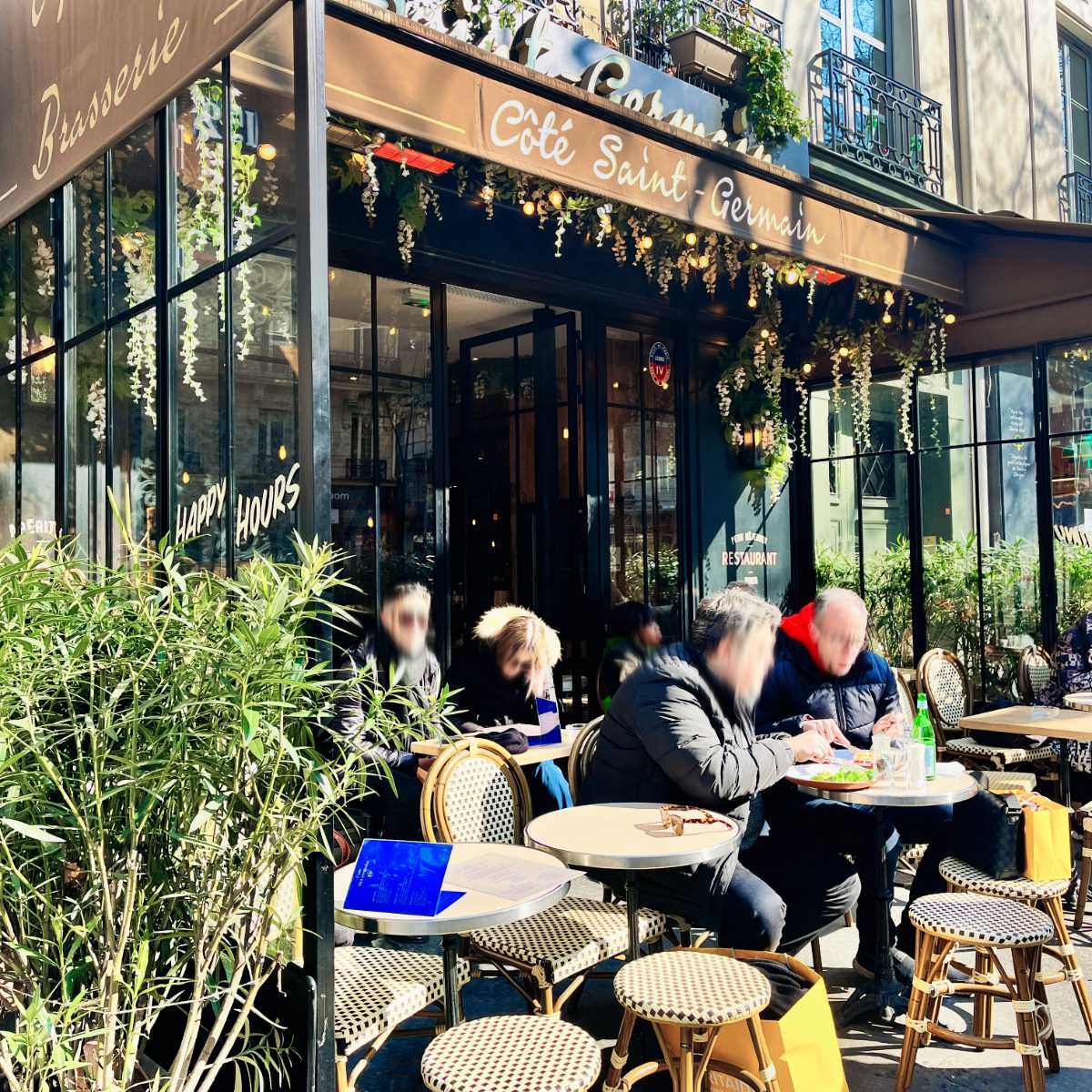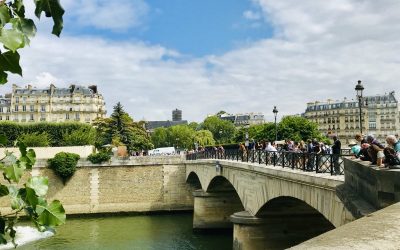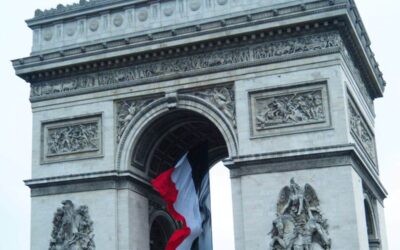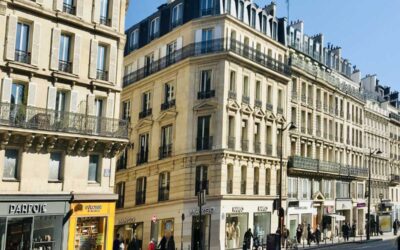When people think of iconic Paris, we think of Saint-Germain-des-Prés. It is one of the oldest parts of the city and one of the most interesting. Its history, classic Hausmannien architecture, and wide boulevards make it a desirable residential area for locals, as well as a popular one for visitors.
It is located in the 6th arrondissement right next to the Latin Quarter, and is one of the most beautiful parts of Paris. It is also among the most expensive.
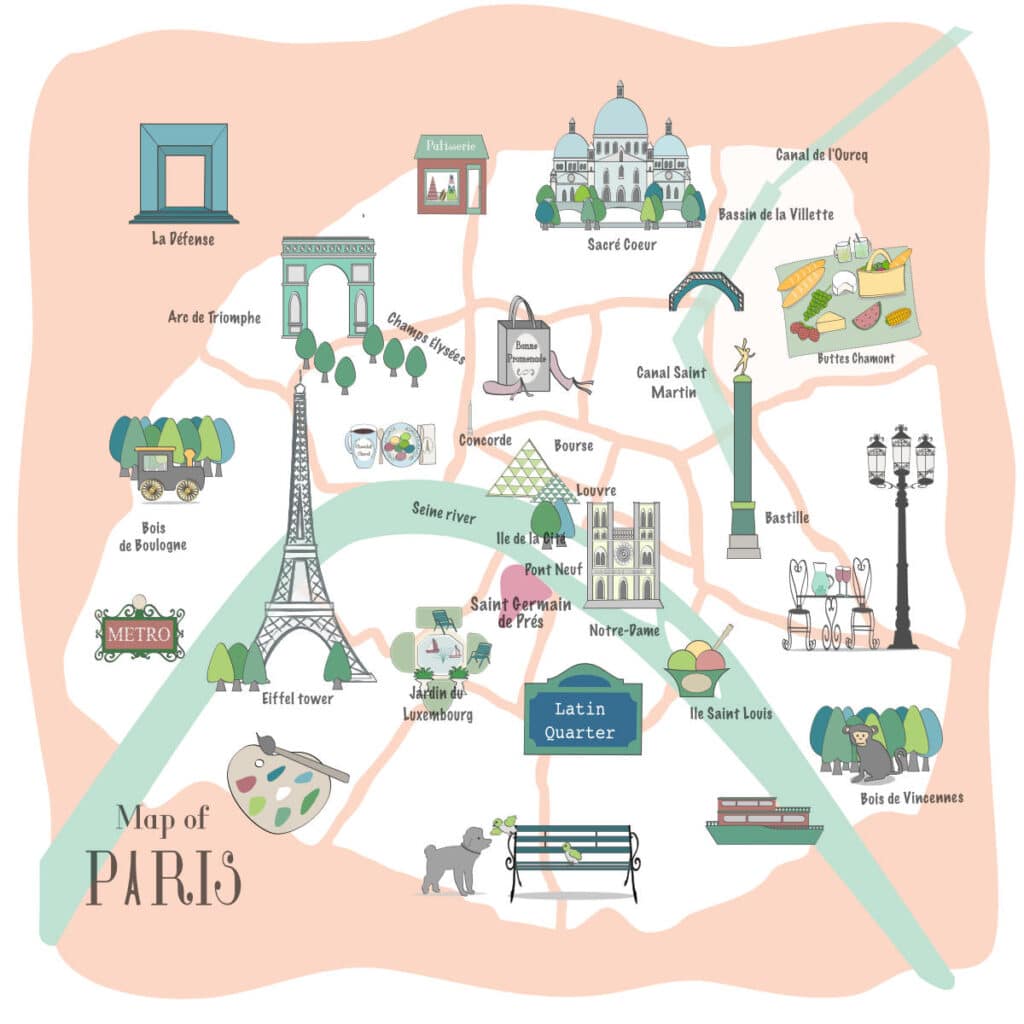
The area is named after Saint Germain d’Autun, an early bishop in Paris who lived here in the early part of the 6th century. He was an early adopter of Christianity in France, following in the footsteps of Saint Genevieve, the patron saint of Paris.
At the time the area was located outside the walls of medieval Paris and consisted of fields and meadows on the Left Bank of the Seine. The French word for field is “le pré“, so the area became known as “les Prés”.
Today, this elegant neighbourhood certainly has plenty of ambiance and charm. So let’s have a look at all there is to do and see in Saint-Germain-des-Prés, shall we? Allons-y!
Top Attractions
1. Musée Eugene Delacroix
With one of the most famous paintings in France, Liberty leading the way, Eugène Delacroix is renowned for his work. In the 1920s, in order to save the home of this great artist, his friends got together in the 1920s to turn it into a museum.
The Society of Friends of Eugène Delacroix included names like Henri Matisse, Paul Signac, Édouard Vuillard, and George Desvallières.
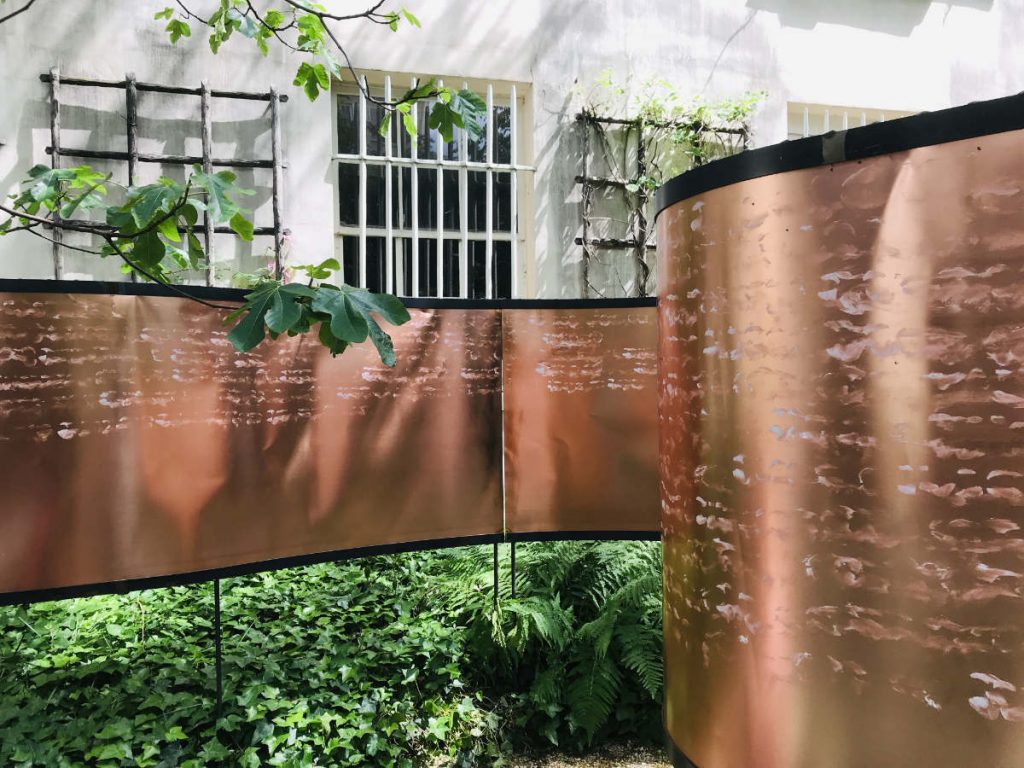
The Musée Delacroix became a national museum in the 1970s and was attached to the Louvre in 2004. Today it features many of his smaller works and sculptures.
Located in the luxurious Saint-Germain-des-Prés neighbourhood, this lovely townhouse in the center of Paris is well worth visiting. You can book skip-the-line tickets here.
2. Abbaye de Saint-Germain-des-Prés
One of the oldest churches in Paris has to be the Abbaye de Saint-Germain-des-Prés. It sits on the site of a Benedictine abbey founded in the 6th century, by Childebert I, the son of Clovis I, King of the Franks.
A Roman temple, probably dedicated to Isis, was located close to the site of the church, making this holy ground as far back as the Gallo-Roman era in Paris.
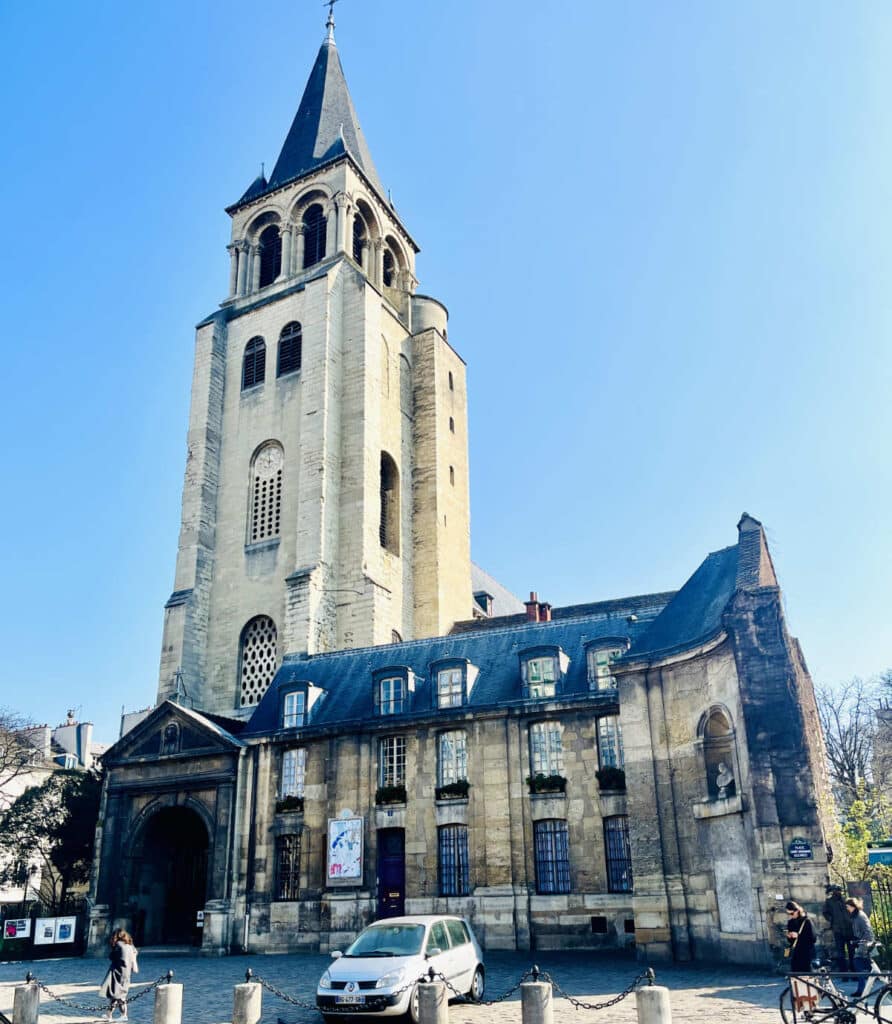
This became the early burial ground for royalty including Childebert and other Merovingian kings in the history of France.
It was destroyed by the Vikings, rebuilt, and renamed in the 8th century for Saint Germain. Burials of French Kings and Queens eventually moved to the Basilica of Saint-Denis, far from the marauders who came along the Seine river.
Abbaye de Saint-Germain-des-Prés eventually became a center for learning, having been located right next to the Latin quarter near La Sorbonne. Under royal patronage the Abbey became one of the most important centers of scholarship in Europe.
In September 1792, during the French Revolution, a group of about 100 priests were imprisoned in the Abbey. They had refused to sign a declaration of loyalty to the new Revolutionary government and were sent out 1 by 1 into the square where they were massacred.
The abbey was significantly damaged during this era and was later restored to what you see today.
3. Les Deux Maggots and Café de Flore
Near the exclusive quartier de Odeon and the most expensive part of Paris, are the two restaurants that have been synonymous with the 6th arrondissement.
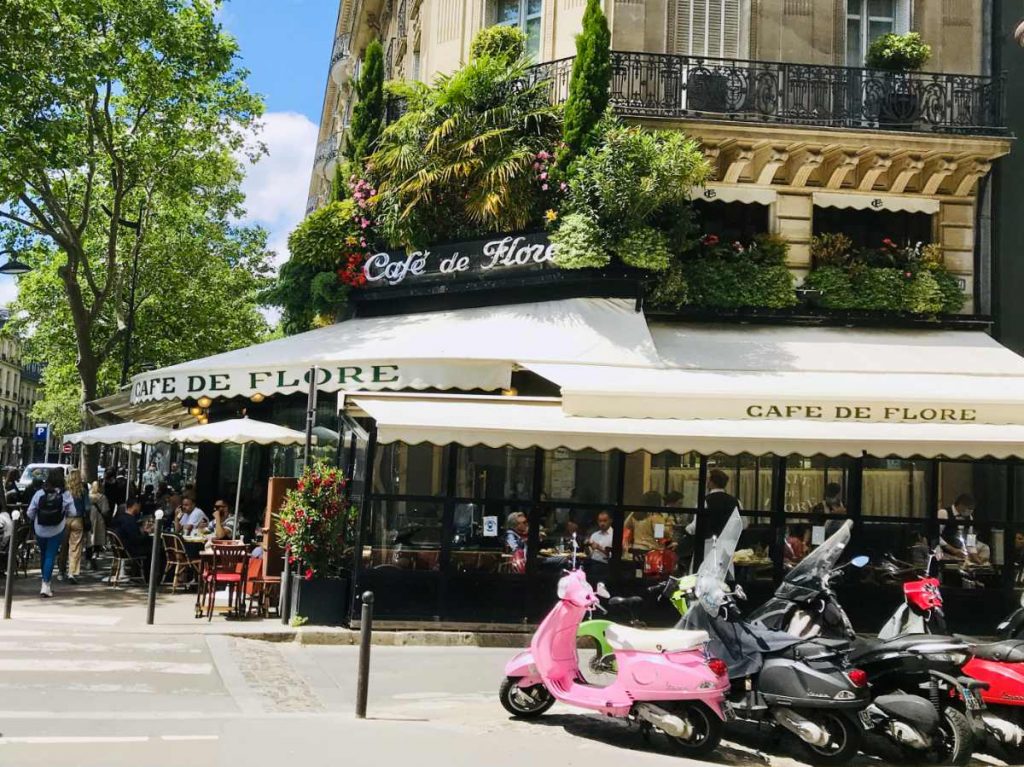
Cafe de Flore is one of the oldest brasseries in Paris, becoming a popular hub popular hub for famous writers, philosophers and artists like Georges Bataille, Ernest Hemingway and Pablo Picasso.
Nearby, Les Deux Magots also gained fame for its famous habitués, including with Jean-Paul Sartre, Simone de Beauvoir, Albert Camus. Today, both are no longer intellectual hubs, but rather a tourist destination attracting visitors
4. Pont des Arts
The Pont des Arts is one of the most famous bridges in Paris, particularly for lovers. It is located on one side of Saint-Germain-des-Prés crossing the Seine towards Ile de la Cité.
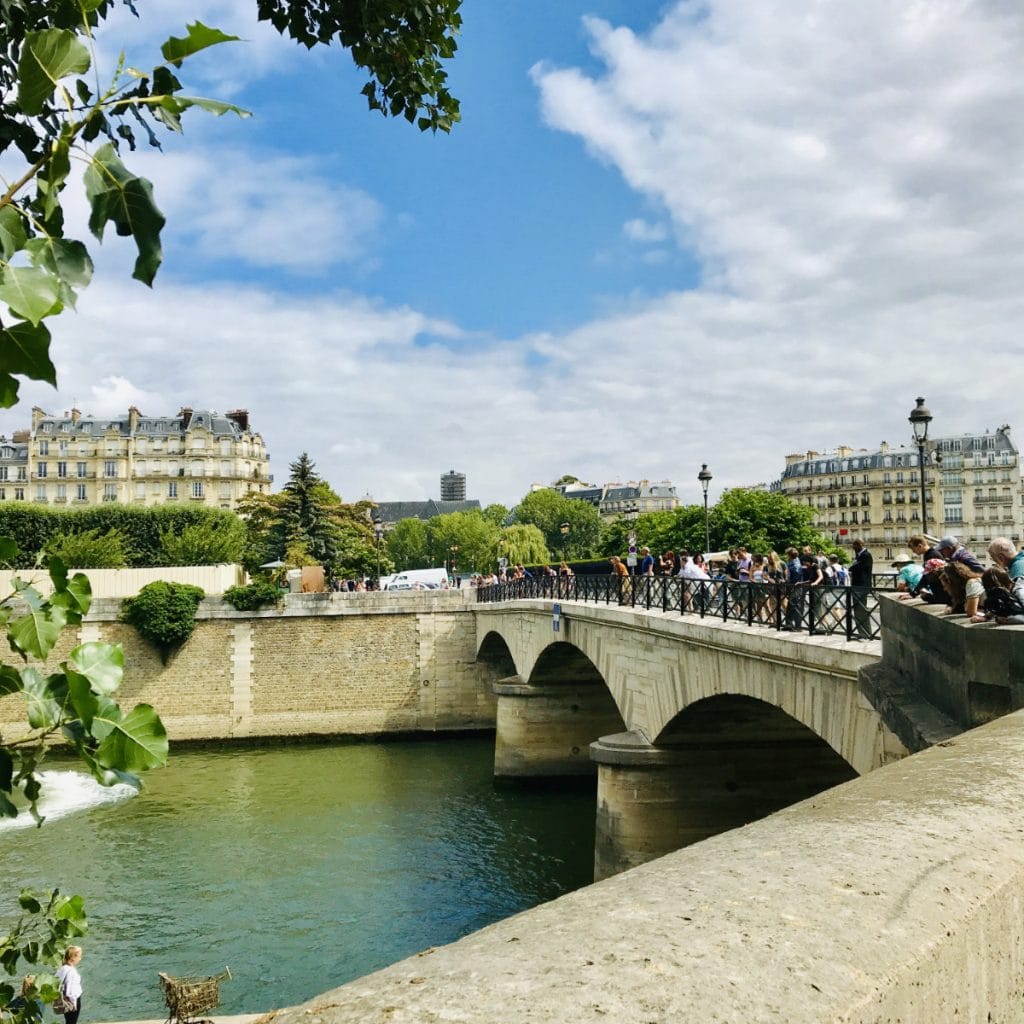
The Pont des Arts no longer allows locks to be attached as the weight of the locks was damaging the bridge. However it is still one of the most beautiful bridges in Paris, and certainly the most beautiful pedestrian bridge.
5. Eglise Saint Sulpice
Church of Saint Sulpice is these days most famous for being featured in the Dan Brown novel Da Vinci Code.
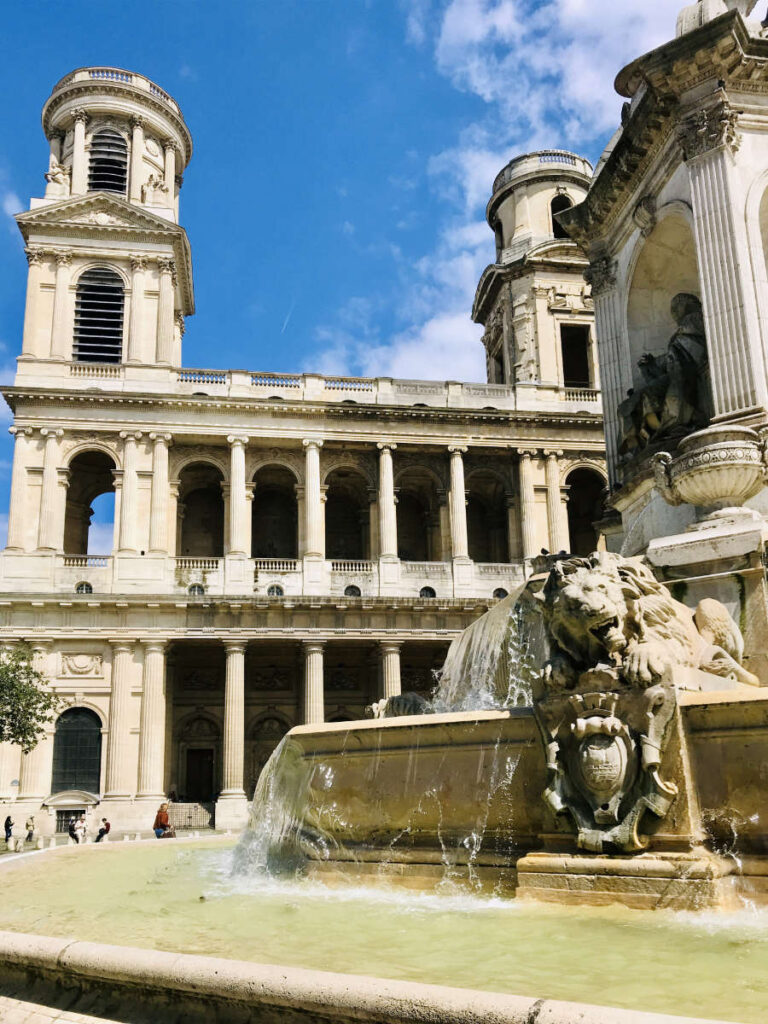
But this historic church is one of the oldest in the city, just slightly younger and smaller than Notre Dame de Paris. The current building dates back to the 17th century, having been built on top of an older church dating back to the 14th century.
It has long been the church where famous locals were baptised (like the writer Marquis de Sade), married (like Victor Hugo), or buried like the granddaughters of Sun King Louis XIV.
With a stunning alter, impressive organ, and beautiful stain glass windows, the church is well worth a visit. Entry to the church is free.
6. La Procope
The historic La Procope café was opened in 1686 by the Sicilian chef Procopio Cutò (French name François Procope) and is sometimes called the oldest restaurant in France.
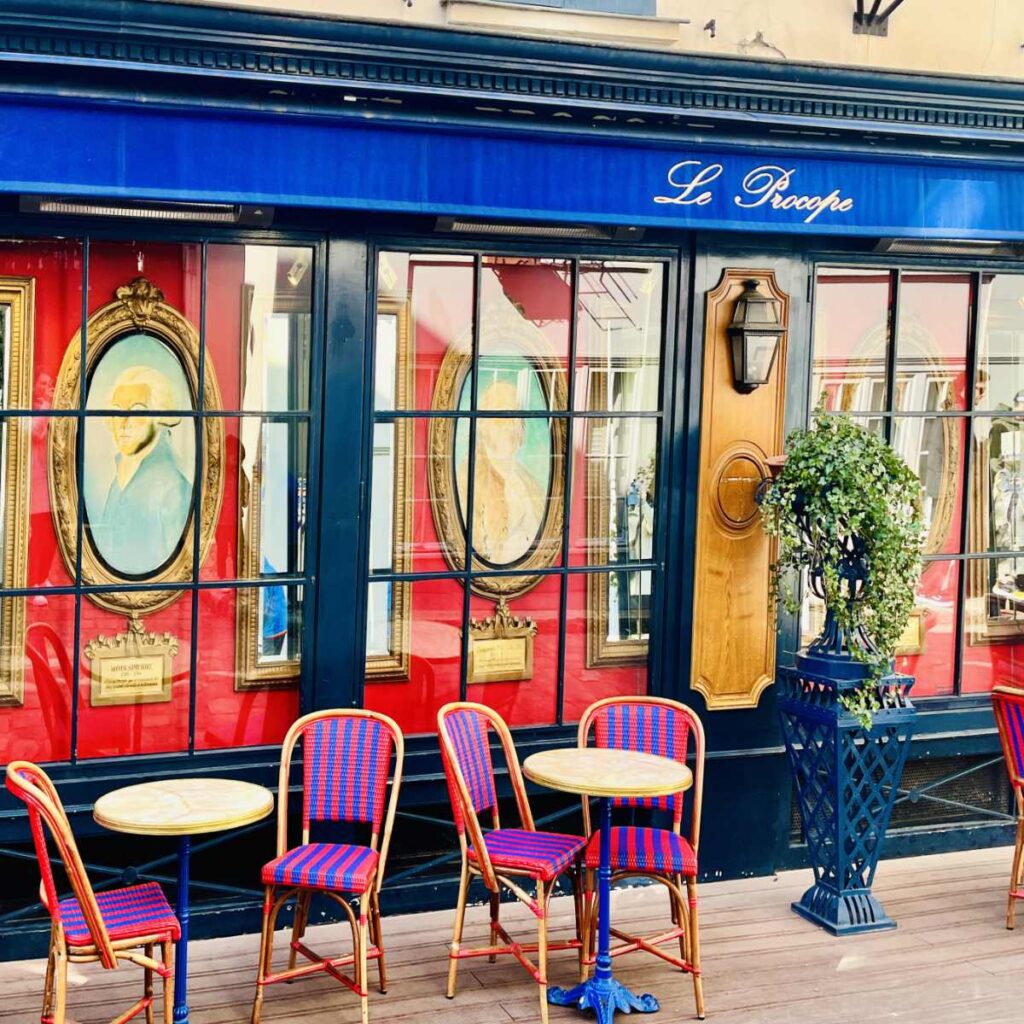
A high-end dining establishment in its day, famous names like Queen Marie Antoinette, Emperor Napoleon Bonaparte, and the U.S. ambassador Benjamin Franklin are known to have dined here.
During the 1789 Revolution, the Procope became an enclave for the revolutionaries to plan and strategize. The Phrygian cap which became the French symbol of Liberty, was first displayed at the Procope. The revolutionaries like Robespierre, Danton and Marat all used the café as a meeting place.
The café later became a hub of the Parisian artistic and literary community in 18th and 19th centuries, like writers Voltaire and Victor Hugo. The original café closed in 1872 (due to the Franco-Prussian war) and reopened in the 1920s after WWI.
Today, La Procope continues to serve traditional French dishes like Coq au vin and onion soup, and is definitely worth a stop for historical buffs out there.
7. Odeon
One of the busiest areas on the edge of Saint-Germain-des-Prés is the Odeon neighbourhood. The district is named after the Théâtre de l’Odéon, an 18th century theatre that was styled in the Italian Baroque style.
Unusually, it is a semi-circular place, rather than a square. It is a lively neighbourhood, with plenty of shops and restaurants.
8. Cathédrale Saint-Vladimir-le-Grand
The Saint-Vladimir-le-Grand Cathedralis a Ukrainian Greek Catholic cathedral located in Saint-Germain-des-Prés in Paris.
It sits on the site of an earlier church built in the 13th century and demolished at the beginning of the 17th century to make way for the new building. The first stone of was laid in 1613 by Queen Marie de Médicis (wife of King Henri IV of France).
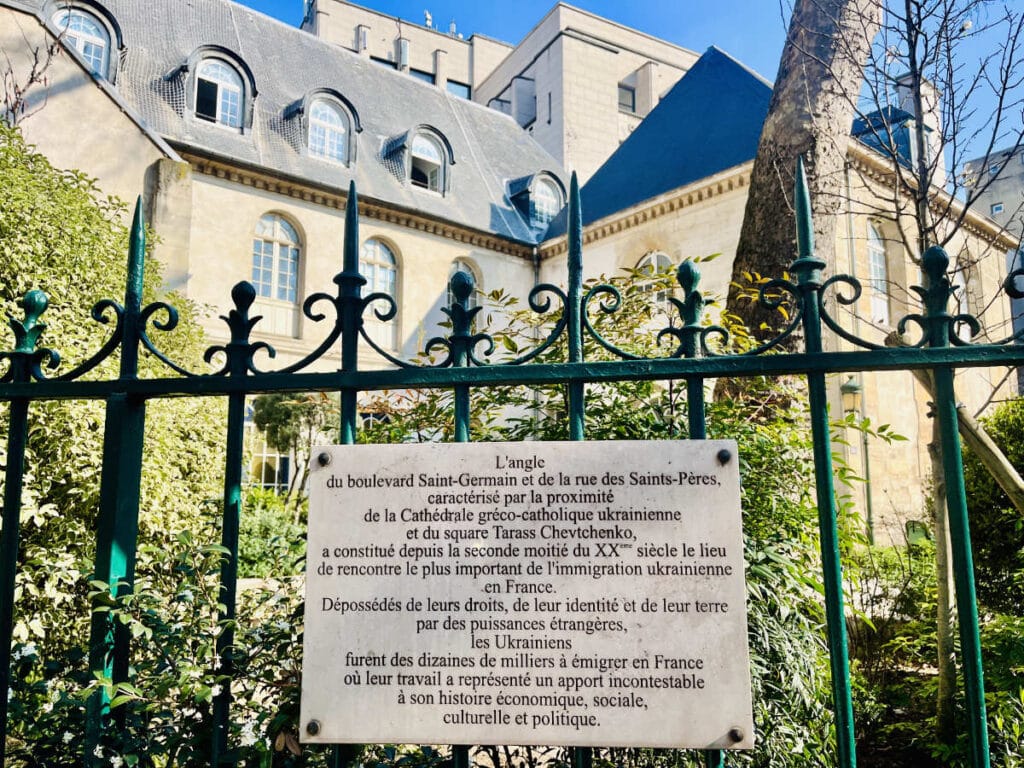
In 1942 during WWII, it was turned over to the Ukrainian community after the mass migration of its refugees who had made their way to France. The name comes from “Saint-Vladimir-le-Grand”, the name of the prince from Kiev who converted to Christianity in 988.
Shopping
In terms of shopping, the area of Saint-Germain-de-Près is Paris at its chicest. Around Boulevard Saint-Germain, Rue Jacob, Rue de Grenelle and Sèvre Babylone, there are plenty of boutiques that are likely to catch your eye.
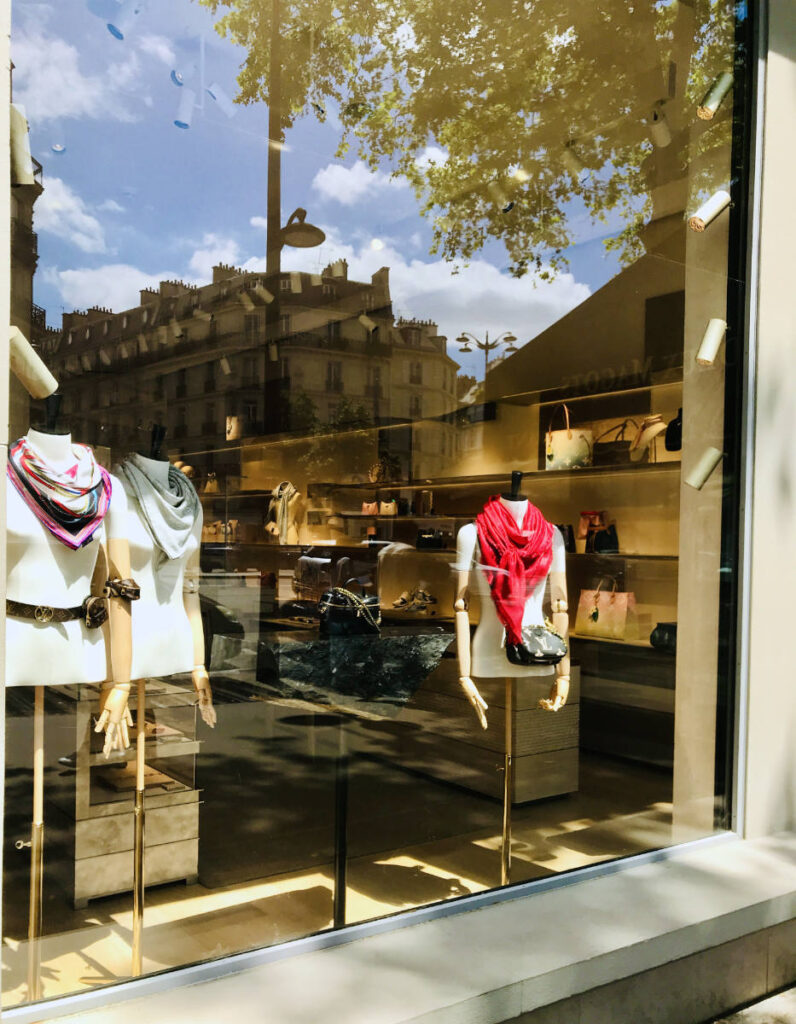
In this retail area, boutiques for designers like Ralph Lauren, Giorgio Armani, Sonia Rykiel, Christian Dior, and others line the street. French classics like Aigle and Mes Desmoiselles are also located here.
You can also find many little shops selling household goods by taking Boulevard Raspail south to Rue de Rennes from the intersection of Rue du Bac and Boulevard Raspail.
Additionally, make sure to stop at one of the local, artisan bakeries like Pâtisserie Michalak or La Tarte Tropézienne to replenish your energy with some sweets.
Restaurants and cafés
There are plenty of famous chefs and restaurants to choose from in Saint-Germain-des-Prés. Some local favorites are:
- Guy Savoy – by the famed French chef at 11, quai de Conti, 75006 Paris
- Le Procope – 13 Rue de l’Ancienne Comédie, 75006 Paris
- Les Deux Magots – 6 Place Saint-Germain des Prés, 75006 Paris
- Café de Flore – 172 Bd Saint-Germain, 75006 Paris
You can find more ideas and ways of spending an evening in Paris here.
Bars and Nightlife
There are a handful of bars and clubs around the Saint-Germain-des-Prés, especially in the area closer to the River Seine. Some local favorites are:
- 43 Cocktail Bar – rooftop bar only in summer, on top of Holiday Inn Paris Notre-Dame at 4 Rue Danton, 75006 Paris
- Le Pousse Au Crime – bar and club at 15 Rue Guisarde, 75006 Paris
- Caveau des Légendes – jazz club and theatre hall at 22 Rue Jacob, 75006, Paris
- Castor Club – snug bar at 14 Rue Hautefeuille, 75006 Paris
You can find more bars and nightlife options around Paris here.
Where to stay: Hotels and other accommodation
With the Latin quarter on one side and the Eiffel tower and Musée d’Orsay on the other, the Saint-Germain-des-Prés is a wonderful albeit expensive area to stay in Paris. Some recommended hotels in the area are:
- €€€ – Hotel Le Petit Chomel
- €€€€ – Hôtel de l’Abbaye
- €€€€€ – Hôtel D’Aubusson (with swimming pool)
You can find more accommodation options in Saint-Germain-des-Prés here.

If you enjoyed that article, you may like to read more about the nearby 5th, 7th, and 14th arrondissements. A bientôt!
